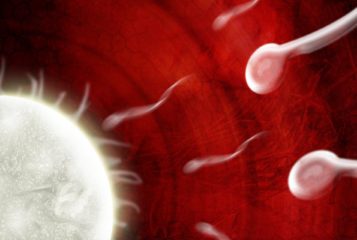As we all spent our second Easter in lockdown in the UK, it was hard to think of all the time we had been unable to spend with extended family over the past year. But in today's world, what makes a family?
It was this question that was asked at the latest Cambridge Festival, where a discussion featuring Alex Graham, creator of Who Do You Think You Are?, and Professor Susan Golombok from the Centre for Family Research, Cambridge, took place. The discussion focused on Professor Golombok's new book We Are Family: what really matters for parents and children.
For this book Professor Golombok spent time with lesbian mothers, gay fathers, single parents, donor conception parents, co-parents, trans parents, surrogates, donors, and their children, asking them to share their struggles and their triumphs, while celebrating family in all its beautiful variations.
During the 'We Are Family' discussion, Graham and Professor Golombok asked if technology had driven the change in social attitudes, or did society drive the need and thus advancement in assisted reproductive technologies. While a complicated interwoven topic, it was easily answered by Professor Golombok: they are closely entwined.
From the 1970s until today, it has been a roller coaster of change. The invention of IVF and Louise Brown's birth in 1978 was a revolution (see BioNews 467). Sperm and egg donation, followed by embryo donation, helped part or entirely non-genetically linked parents to have children. By 1985 surrogacy was legalised, and more recently, it's become more common for single women to use donor sperm to create one-parent families.
Professor Golombok entered the field in the late 70s, an optimum time to observe the diversity of family forms that would blossom over the subsequent decades. In that time, advances in technology moved more quickly than society could. The first IVF mothers were shunned, and most people in the 1970s disapproved of the technology. Now, almost everyone knows someone who has had fertility treatment.
The resulting children of donor and assisted reproductive technology are at the front and centre of this discussion: what is it like being the child of a sperm or egg donor? Professor Golombok described the experience of an 11-year-old boy who she encountered in her research as he searched for his genetic father. The boy found he was drawn to the commonalities with his donor, his hobbies, his looks and his new family. He also uncovered genetic siblings in a similar position and experienced a remarkable instant familiarity and an emotional bond formed between these genetically-related strangers upon meeting. A magical genetic reunion.
Similar parallels might be seen on the show Who Do You Think You Are? In its original format, it was intended to be an interesting way to talk about history, explained Graham, but the participants showed sincere emotional familiarity with intergenerational traits. For example, when Mary Berry learns an ancestor was a baker, or when Sheridan Smith learns of musicians in her late family. They are the children of their genealogy and the show creates this wondrous moment of recognition and feeling of belonging in their life.
Professor Golombok added that genetics is only one side of the coin; the emotional and psychological side should be weighed. Through her research she has shown parents of non-traditional families are highly involved, they create an environment for children to be well-adjusted, happy, and emotionally stable. Outside the family, children can face a variety of negative experiences; they almost always have to put up with some prejudice. While, some feel marginalised as they didn't witness families like theirs in entertainment media. Furthermore, peers' continuous negative comments combined with ill-equipped teachers can create an isolating effect. A self-preservation measure of choice has been to limit disclosure, thus limiting prejudice. Although this leads to its own challenges, as society is slow to change without openness and honesty.
The discussion outlined how the law has a central and prominent role to transform societal attitudes. Professor Golombok is able to draw upon research and in particular her longitudinal study about surrogates, which is the first of its kind. The data presented is in direct contrast to the general public's perception, and demonstrates close and lasting relationships between surrogates and intended parents. This will hopefully inform the law reform and subsequent societal attitudes towards it.
Professor Golombok believes the future is hopeful. Her research has suggested that human relationships matter more than genetics, and that we may be at the beginning of a family revolution. We will see transgender people parent more children, single men create one-parent families, while synthetic eggs and sperm could create un-imagined possibilities in the future. We can see a glimpse of the human condition, in all its wonder, re-creating what we know to be family and with it what we know of ourselves.
This engaging discussion between Graham, and Professor Golombok, acts as the perfect introduction to the inevitable page-turner that is Professor Golombok's new book (see BioNews 1071).





Leave a Reply
You must be logged in to post a comment.